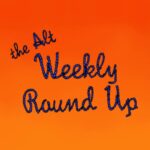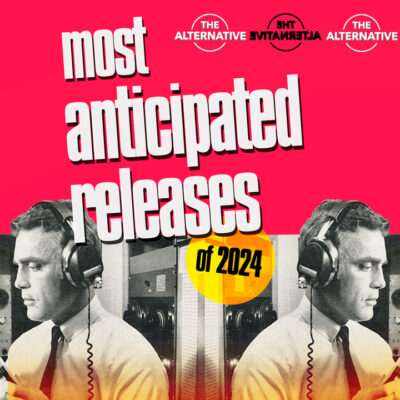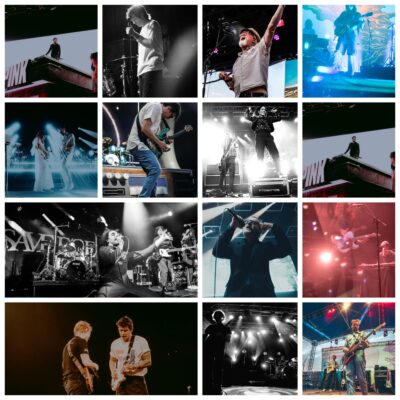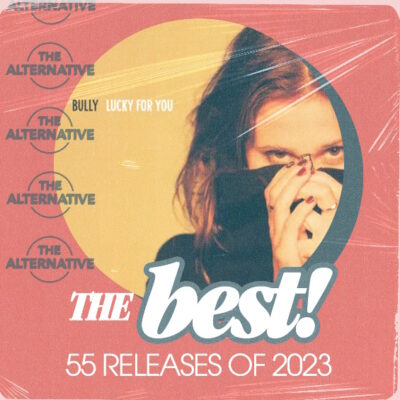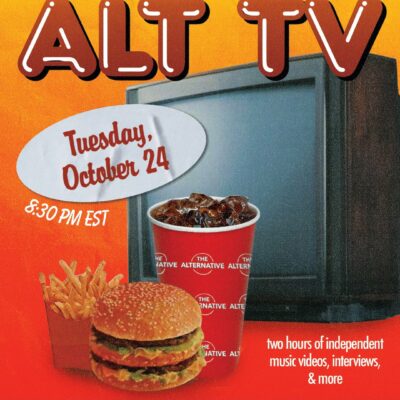Get Drunk and Press Play: The Nostalgia Fetishism of Emo Nights
Posted: by The Editor
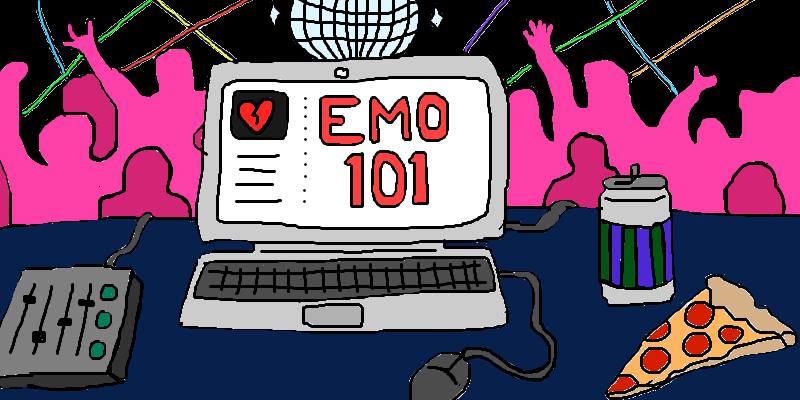
Graphic by: Julia Carbone
A couple weeks ago, I attended my first Emo Night; both as a showgoer and to debut the musical stylings of my DJ alter ego, DJ Dia-Beats. To be honest, I was pretty apprehensive about going to a “concert” with no live performances. What was so great about jamming to a Spotify playlist on stage? However, with nothing to lose and little idea what I was expected to do, I accepted.
What I did know was that I had to make a playlist of emo songs that people would not only enjoy, but would want to sing along and party to. I asked a few of my friends who had some experience with it, and almost unanimously, they told me, “Play the hits. People want to sing along to old Mayday Parade and Taking Back Sunday that they haven’t rocked out to in years.” This didn’t sit right with me. I liked those (vaguely emo) bands, too, but what about the underground groups? Should I not include talented (real) emo bands that I loved in this playlist because it was likely nobody would be able to sing along?
I deliberated on my playlist for three weeks, and in the end, I snuck in some personal favorites that I knew wouldn’t be easily recognized. Among the Cartel and Yellowcard, I had nestled in a Runaway Brother single that was guaranteed to get people dancing, a Chinese Football song to switch things up, and to close it all out, a classic punk track from my favorite Hudson Valley act, With The Punches. When I got to the venue, I found out I had the only playlist that didn’t have any double tracks.
I was nervous to be the first act. Still feeling lost as I took the stage, I asked my friend Tony who was also DJing that night, “So, what am I supposed to do up here?” He laughed. “Just get drunk, dance around, and press play when you’re ready,” he told me.
I was a natural at all three. The high energy that permeated the room from people dancing and jamming to all of these songs that rarely get played at bars and clubs was exhilarating (not to mention I was pretty drunk by the end). However, I couldn’t help but feel a little disheartened that the turnout was better than the last few live shows I had attended. It seemed people were willing to spend $10 to dance to some songs that they could hear literally anywhere they wanted through their phones, but weren’t interested in paying $5 to check out some live talent. Don’t get me wrong; I had a lot of fun bouncing around and singing along to the songs that I loved throughout my youth, and I get the specific appeal of such an experience. But I have just as much fun throwing myself around to songs I’ve never heard before, too. I felt like the event solely fed off nostalgia instead of also promoting the growth of new emo music.
Throughout the night there was plenty of Fall Out Boy and Panic! At The Disco, but no surplus of songs written in the last year or two. This is a shame, because the last year or two has been incredible for emo music. Hodera brought us a folk-emo blend that captivated both demographics, A Will Away gave the world an emo perspective through the lens of 80’s rock, and bands like Fossil Youth and Everyone Leaves are blending grungy, raspy alt-rock with ‘midwest’ emo in new and exciting ways.
Overall it was a great night, but I woke up with a nagging feeling about the lack of representation of these newer bands. The throwbacks were emotional and the partying was off the hook, but it felt like Emo Night wasn’t living up to its full potential. I wondered what could be done to evolve Emo Night from a nostalgic party to an agent of growth for localized music communities—without losing its carefree spirit. For insight, I reached out to Tom Mullen, founder of the acclaimed emo website Washed Up Emo.
Mullen, who has been described as “America’s de facto emo historian” in a 2015 Noisey article, is responsible for the inception of the first Emo Night, ‘Do You Know Who You Are?’ which was held in NYC back in 2011. It’s the longest running DJ night of its kind. He also regularly hosts a Washed Up Emo podcast. Naturally, Mullen was the best person to discuss this pattern of exclusivity with. His site began as an outlet to commemorate the forgotten greats of emo, but has developed into a place where all of the genre’s generations can be celebrated together. Translating emo’s diverse and ever-evolving history into a singular event was the impetus behind the first Emo Night, but it seems that with so many Emo Nights popping up throughout the country, the message has gotten lost along the way.
I shared my concern with the lack of underground emo bands on the other DJ’s playlists with Mullen. I asked if he thought, in his experience, that DJ’s tended to lean too heavy on the hits, or if he saw a fair amount of representation from DIY bands.
“Unfortunately, the large crop of DJ nights out there for emo are essentially only playing what was popular in the 00s,” says Mullen. “They were into the genre ten years ago and are back again to play ‘emo’ for everyone. In reality, the great DIY bands from the emo revival of ’09 and onwards aren’t given any support, let alone the ’90s and ’80s bands that came before them.”
I hadn’t even thought of the earlier generations of emo like Mineral and Jawbox being overlooked. Much of these earlier eras of emo were steeped in the hardcore and punk scenes, especially in the hole-in-the-wall bars of NYC where bands like the New York Dolls and the Ramones came up. Why not throw some of these true classics on the playlists?
“The Emo Night, if you’re going to call it that, should be all of the eras, not just one,” he says. “If you’re only going to play the pop era, then call it emo/pop punk night. Yet, the marketing tells them to just call it emo.”
I had to agree with that. It seems that Emo Night is just using the cover of the ‘emo’ brand to draw people in. If these DJ events are going to call themselves “Emo Night,” they needed to focus on the wide spectrum of the genre and avoid this “era fetishism.” Emo music was practically founded by outcasts, but the DJ’s are only playing the popular songs that are loosely considered emo, and that goes against the nature of the genre itself. It promotes exclusivity.
Mullen shared a few articles with me about past Emo Nights, where I read about a group trying to trademark the term “Emo Night.” The very idea strikes me as counter-cultural. People are trying to trademark the concept of emo as if nostalgia is intellectual property. I read in another article that ‘Do You Know Who You Are?’ has never charged a cover price. I asked Mullen what he thought about the capitalization of the emo subculture and if it was destructive to the growth of the paradigm.
“Yeah, we’ve never charged a cover. We always did it for the music, knowing that we’re promoting the bands and hopefully sharing the music with others helped. It was always for the love regardless of how many people came out. Charging cover, I get it. As a business, I understand why. As a fan, I don’t understand how playing music on the backs of other bands is at all connected to the scene I grew up in,” says Mullen. “I don’t fault marketing, but I fault when it’s played up as [if] they’re doing it all for the music, when they’re playing Alien Ant Farm, P.O.D and any other song that happened to be on the radio around the time My Chemical Romance and Fall Out Boy were being played.”
The music industry is a market, and to expect people not to make money off of it is naive, but there’s a thin line between paying fair dues and exploitation. Marketing and promotion are a necessity for anything in this business, but it seems some people take advantage of the trend. Mullen agrees.
“I don’t treat music and bands that way and feel as soon as the people stop showing up to the DJ nights or the events, they’ll stop. I hope they don’t, but when it involves that much around the marketing and the perception, it’s a tough model to sustain. I hope emo continues in all forms that promote the full history of the genre, not just a few years. “
Emo Night has a lot of potential to be a tool in the good fight for exposure among underrated, talented emo bands. The issue is going to be evoking a unified change among the assorted events and the DJ’s within them. It starts with us: the DJ’s who spread an environment of exclusivity, the showgoers who are too afraid to dance to a song they don’t know, and the hosts of these DJ nights who choose to exploit the good nature of this genre and its culture for a quick buck. If the term “emo” is being used as a successful marketing device in 2018, then that means there’s potential for burgeoning acts within the genre to get the acclaim they deserve. Let’s make it happen.
—
Luciano Ferrara
The Alternative is ad-free and 100% supported by our readers. If you’d like to help us produce more content and promote more great new music, please consider donating to our Patreon page, which also allows you to receive sweet perks like free albums and The Alternative merch.



